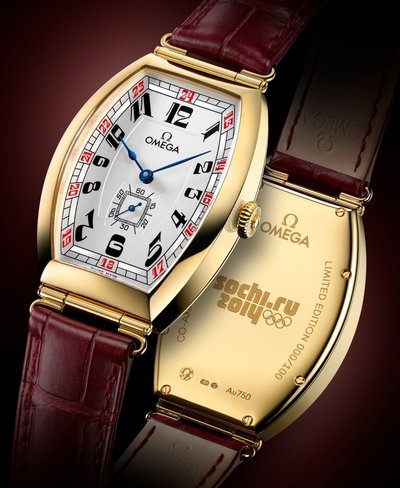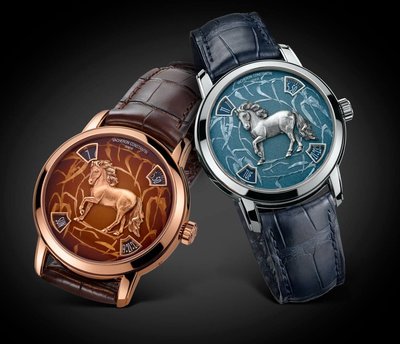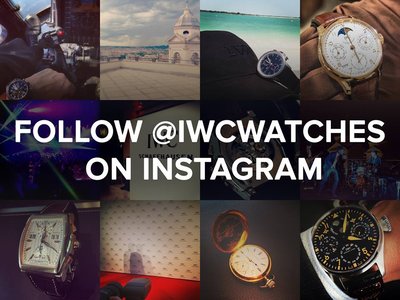Global interest in fine Swiss-made watches grew by 5.7 percent despite a slowdown in sales throughout Asia, according to the Digital Luxury Group’s tenth annual World Watch Report 2014.
The World Watch Report’s full edition was released to coincide with Switzerland’s Baselworld Watch and Jewelry Show March 27 to April 3, just as the Haute Horlogerie preview was distributed during the trade-only Salon International de la Haute Horlogerie event in January. The extended edition of the report examined more watchmakers as many brands represented at Baselworld are jostling for attention among the horology community.
“There has been an over-investment from many brands on the Chinese market leading to some disappointments, but the reality is that, ‘Watches are part of the fastest growing luxury segments in China right now’ according to Baidu vice president, Liang Zeng, which participated in World Watch Report 2014 report this year,” said Laetitia Hirschy, international intelligence and communications manager at Digital Luxury Group, Geneva, Switzerland.
“We have seen China growing non-stop in our report in the last 10 years and we remain optimistic on the five to 10 years’ outlook because its tier 2 and 3 cities are still largely unexploited,” she said. "[And also because of the] increasing number of Chinese luxury travelers. Only 3 percent of Chinese had passports in 2013. This is predicted to increase to 5 percent this year, which lets you imagine the potential, making it difficult to assess the real size of the Chinese 'market.'”
The World Watch Report 2014 examined 20 international markets including Brazil, China, France, Germany, Hong Kong, India, Italy, Japan, Mexico, Qatar, Russia, Saudi Arabia, Singapore, Spain, Switzerland, Taiwan, Thailand, United Arab Emirates, Britain and the United States.
For its report, Digital Luxury Group examined 62 brands broken down into five categories: Haute Horlogerie, Watch and Jewelry, Couture, Prestige and High Range. For example, Bovet is categorized under Haute Horlogerie while Bulgari is defined under Watch and Jewelry, Chanel is listed as Couture, Tag Heuer is in the Prestige section and Baume & Mercier is placed in the High Range category.
Market assessment
This year’s report found that the BRIC markets continued to fuel the demand for luxury watches. Countries such as China, Russia and India had the highest year-to-year increases with China seeing an increase demand of 59.4 percent.
With an increased demand of over 50 percent, the luxury market in China continues to escalate despite predictions of a decline. In China there is also a strong interest in ladies’ watches made by Omega, Vacheron Constantin and Chopard.

Omega’s Sochi Petrograd and Olympic logo case back
Also, the Chinese consumer has invested interest in watch brands that fall under the Haute Horlogerie category. Digital Luxury Group’s SIHH Haute Horlogerie report found that the market’s interest in haute horlogerie increased 57.9 percent from the year-ago period and accounts for 30 percent of total interest worldwide (see story).
For watchmaker marketers, appealing to the sensibilities of Chinese consumers may result in brand loyalty. For example, Switzerland’s Vacheron Constantin targeted affluent Chinese watch enthusiasts with an ultra-exclusive timepiece series that celebrated the Chinese New Year Feb. 1.
Vacheron’s Metiers d’Art Legend of the Chinese Zodiac watches feted the start of the Year of the Horse. The watches incorporated elements of Chinese culture to create a timepiece of significant value in terms of local customs and horology (see story).

Metiers d’Art Legend of the Chinese Zodiac: Year of the Horse
Marketers must take steps that support this trend of appealing to the cultural and social values of the Chinese consumer.
“Leveraging on this information, digital strategy and research firm Digital Luxury Group decided to bring for the first time at Baselworld, Peter Xu, one of the most influential fashion bloggers in China, to connect Digital Luxury Group’s clients exhibiting at the world’s leading watch and jewelry fair to his 1.3 million sophisticated and tech-savvy fans on social media,” Ms. Hirschy said.
“Chinese luxury consumers are, on average, much younger than the rest of the world and eager to use technology to showcase their personal tastes - hence the idea of connecting our clients to this strategic Chinese audience,” she said.
Brazil’s market failed to deliver amid high expectations as the country prepares to host the FIFA World Cup this June and the Summer Olympics in 2016.
“2013 was a tough year for Brazil, one of the most difficult ones in the last 15 years,” Ms. Hirschy said. “The market suffered from inflation and explosion of the dollar, resulting in caution from consumers.
“Furthermore, lack of infrastructure was a recurrent theme and GDP growth was really weak,” she said.
Although consumers were cautious, watchmakers still invested in the country due to its affluent population and the attention it has and will receive from hosting internationally-recognized events.
For instance, Swiss watchmaker Hublot opened its first Latin American boutique in Rio de Janeiro Feb. 5 as the Brazilian city prepares for the FIFA World Cup beginning June 12.
Brazil will host the international soccer games for the first time since 1950, as the country continues to burnish its credibility as an economic player with a high concentration of affluent consumers (see story).

Hublot‘s Pelé watch case back
Instead, watchmakers may have benefited from targeting Brazilians traveling abroad or online.
“Luxury goods are taxed heavily in Brazil, thus a large share of luxury purchases are being made abroad, usually in the U.S. in cities such as Miami and New York,” Ms. Hirschy said. “Whilst purchases may be conducted abroad, pre-travel purchase is usually done at home.
“Brands can increase their visibility by targeting Brazilian luxury travelers online, through dedicated campaigns before their overseas shopping trip,” she said.
What works
Watchmakers have truly embraced social media and use various platforms to appeal to watch enthusiasts around the world.
The World Watch Report found that Instagram had the highest engagement rate beating out parent company Facebook. Instagram saw an active user increase of 23 percent while Facebook saw a 3 percent decrease likely due to its ability to stoke product awareness.
For instance, Swiss watchmaker IWC Schaffhausen encouraged timepiece enthusiasts to join the conversation through the use of branded hashtags in a new campaign on mobile image-sharing application Instagram.
IWC has a strong social media presence that helps engage fans and keep the brand current. To keep the conversation going, the brand uses a series of hashtags to make their social media accounts as interactive as possible (see story).

IWC's Facebook banner to increase Instagram followers
Due to Instagram’s popularity it will continue to help watch brands promote styles and create a relationship among fans.
“Wristshots are very popular on Instagram and enable watch owners to help build brand identity and be part of it on the platform,” Ms. Hirschy said .
“[Also], filters allow for a more lifestyle content and personalized approach and it is easier to find content with hashtags, such as #WatchWednesday and #InstaWatch, than on Facebook," she said.
“With mobile search increasing, the mobile-friendly platform holds a promising future. Furthermore, if implemented it can be optimized with ads, embedded links and already is proving itself with the success of key opinion leaders.”
Final Take
Jen King, editorial assistant on Luxury Daily, New York
{"ct":"PDzz0zI3D2XO3uDfHsrwi9wYzoiDL4dqmVrDIfOE31FFzrPYqBYCeKhneJsKLQU+nkIsXgSp3Wrjf\/yJEWF3wTGsJV4F4p1Qbm1aBkfLfQBIV0+nMnG7kumfegjPEU7n7vEt3afd0HxrURi2fEiIoDvrQJhCBstolczBxnbunIz0V0FRzE3b4xrkqaZXn+lr+3owSru4shHrlKeJc7VeK9XXZ3\/gxlQ0zZFmU0fH6cA1lkMXRyl480PzQy1zzAKbp9HptrJYgB9dBS9EYJfkZu2+8782gewBJUNZI1Gzu6OZHOex0lTfxkIOSBalh8BTKuGKOV2xS6yvEvPBWHW2GnvsyQwzi5eZPUqr9WsZdS0BhHfbroblhZfZAFs1qDaSGI5t9b6T4iRmmqQwhI1R+2hQ4mlR2LGi5d0Qy5Q6hly\/Ps1e4IwUPCfjtZduBydSlrJ9u7SreQnKdQrc9gR6OtNFWaEygNuCRZV9STjD+sZ2kkzj4T15sFRWyOM4xM2B4IsoWjw+pfQq13f2mMBmx9vTIrTAV5mBEOQM8jNni8DB6zWxDWPFwCqzE1IqT+SyZ4KdV34W6KO1RTMICMMeMirp\/DpWJ5FzXQazcObkiSWMvGukrDsxvRdFS2aqsyAGqmROERX+ry8Jo5WPTheK65GUxKvhSN3rTF\/XBsmnmUaZuEjjN\/q2WKf808Ro088Vk71THmEk8mRBuPLYgP\/uyM0ckDfTdAoqajlMV1yP16vw8VYnl5+PfKR\/10DAXWsYd8Urwk902EqY+Wt\/Wv4gzAzh31cu5QGE7XAH4x3d6vb\/XoF0wL+6T7kMO9mJAaXwj1SA638kI9J+iF0P6VR\/9Rd+x4JBta7A1Q7DLxLex1L+V+UTh1FO++ETxHSxwcImkVHV61xsiMcQ6f5keKt\/E8ZkvtgtS6m5HWqAo8EEHGZRpP8dv3S2dYSY5laloZwJfvOo78h6W3RHRl\/VwTh9deS4qganHaibfbQm6+UJNzNH12VoNgX0tfuNku0cyoFtUxxiV9Y3byU\/sUm5f7XO13Kxj+nYY7aNXjFH3onjbpUcW07aFLooOODisOns8xiKO6KO4nFJAq+QL45\/mAtgJrD5mIBxGpW2g+rtJyP7EcAyH+j4+x2U8\/rHYZ6\/lM+8DB2lUb7fwWlDXkH7eJvZRegfnkmf7kJAjLGAYZ1VocYsSry7O9yWyig8mKluP0ghXMzsHSXRi\/C9xA7ufcK\/9X8ITcDyKvw87iY79AGkv6KIc+fSTGwa2E\/064rVaipmj9S4VnGyPHszhQBrW\/OUKrqHVpKqtnnhZH+K7\/lT+KsiIAURbvrwcmy8QkQKCNKuAAZEnFCB2Cjhd2KvFU0Zf\/FQ030ndYbViNVNhhRrGI6IkW32Gz7MEjVo9rHQ9tykQjJjdEjDnwnyrEY8J\/4Pz83GTn1VPpZq3XHn3TIQO6cpmSiBTUz4DOBU26VqkfOc7lhVjnrJEFw84BD+CpgDovFOrxakalGjNCseOhyGvW\/L06zpdQ+jk\/bwEtha4s1\/C7ZAGTczHemPojqtQ9guc74bSLCJc0mVzzfJY\/pu\/Zs\/puvvSLZuSmZ7Dkg65ytmNMVRQV0zg4n0gp8u9RBdTjRKWAVBrVKL\/JSG1cHb3B51nIA2y1WJc4FRCR0Hsoc5+lx+fHUaRKqLPK6jJILS2AdcSVK3WeZK3aDDui6gXu3gWWPD2OgK\/Zz46yqG\/gWKEwftG1dLGE6eJ9ycBiMPlMN3XziCtbJwQ\/4dn4kfD8eBs0UvlIUGHM8Jbw7y1534ZeYi45euvLTL68N1ZXU6gS\/F5BPK1tn9WeTibBtCizU7An7wk0a66z5+\/+j3Y2pnZqZqs5OJ6BLvt2vLFxb1HTvHlO5SfQAPo\/ZpIOZ0YCflPe4S5gGW\/gVJgyf2PUPZu637ehEZZQ1Y2HeTcGEsf+DNgQkMUB0H9LZTwmWn60X+cGVKF41GdSH+Hc5eLYd+iWpbvbJnetK1UIvvN4T9XjtfwbIEWiUp1Fz3Uo2f74ogeFOtW9lnLKx1Ii9r7cWYvH7cRmiQMuS0yyoN08FnXoOCm+QWsGqFh3F5Hw342RR5ad7bAQUWiUvmWf4A7o2IXmcPIJVH3YJmCn+K22UtlI6PlOaoIvxFadLkLLdAVDi5MyeXOFFWWd8qcSFl3UuFnHGdRb9alNgmPfNqlGEcDIIz98ee0nEFdCtn\/8ODMnxtRKfj+8NZwoCAiHkIXuM+RuzcbjxApSqFiAzCWd8vANZe69sz7S\/\/8Z51rlEJ4JLN6B5w9gOrLv+pjxdYoflxHH+NoTEcX7oPFybv6t2WtesA8rdie9OyXzXkqRw9kOkAv+9\/mMUKD7qvvGmhtP\/NN1Ad3O8oe0ZIi8E86yovDwgIh\/Zg9oL\/IHqLBfYVmpDmyi1DppJOYzLtPQ\/RV28qmNI\/quz8V2EPRewOrJaz+evSVOPozRaxvvMc6fsp4emLpXYN3TgeJlIgvtFscUutWQJDNU4gmWHLe1NKR34zs1buIpSlTC8iv3\/O2yBzp0yFuZhJ96u3N1Du3IVeWYqrFkVd5tMd5k5Ai6wMQMJJZIT6YmswXTTynaMtRwYumde2GwXYxT0R+2dnVdnf2BQ7pS62PuSKfI2bRZ\/zddZs+btWe8SGCJpLtiKlJfa5wDw9D7lsZxK\/NpWtfqW\/RIpvR1qeLnia5nM8cQ2PDRJXwIJwOi5ODSe44NTdLXzm58lNxKRl8\/EsFMLbbjbdKG0hBz7Wz9DjAHcBVvypdKsJYoW8fhLihdYeNr5hcnV9\/Wcm6DSEnxRBilGQ0d7CNrmcZ4RHc8yD8TzM5dQmRVDIyWM91Z7RMuzABBQ5D0DwITX2fFTNDfSuGOshLdSRUxO3P+57Kd7WKdZRIZls6KPrUqTxI83BgILzScFhgG9wMXDlLMOzFTy81uIl8Z44E\/iXAMdPNDKnepcL853DxmyXZlIsEbbfKUWGUZLFoYky0NVO4L7rVNS176k3sJ4NxFwLqTapLgCwiRCOTaCgz5ybho3BXxLR+NF+7NQoEL914kYQEcF3WC2Ma4IoH2XJTrIN69xtgMxJla4\/ek8T2tZE5Izl6D3VUJ5qs4ROwBRyd8vW5bxXbkPUO016c2UeQmydIeR7P6uSyktijaXxQdRVRcUrXHwN+QmDc9Zh7RjolKVqlo2DAG\/6sP60Nspjt3jnCu5fUNnKZiLzEW9azJAym0IR2HU7uJAxqCoJUrU3EskG9uU2WcMqvwJxvKVY5\/ND7HD\/f50wKDCsbUGFam5\/Lk1DQ1BaRQ4YrFY+q7iSLGfyqwl1RyO4EZ6awg2aQxzdFj0oghRIfiKFe3BWY1p6GHr108EZt9JZ6yZ9S4qI2YqaMa7oCsW4WmoT0DosIWk9RcO7ntN3x94li5mU9pX4ZcvXIWX5qs3OcSbdMhYB0LeXxYVQoAGpYwkNq+VNA5b6E25vy7LpZ88CdpZC5SEQeRB8SRptBzQBQfcPR8odhBN8mINnxVbwiagdphQ5LbzmnZNE5cu99oVy+akWBUSxGWOBfzPQN23nxH8XBylN2Sag80CUubN4EL51egUyGfnqiZu3sgYrqwYcBjuI9yBGzcbavHGXxwD3FiZehOHdVg6RwYoKHbO5C8F3RVlelE4kwiFC3E0J2iUA8Z7Q71e3GtWdCIZZIq8cr2gs5nImY2VujSjFTo3VhqG6T77b2bSbnTnPZRIycJDLhScgAvj+e2pS3ZIW4WwH29BjEAdeTMrsSoyXMB0NE0P1XpskxpJ4mYOM7CJppavzNqfpJ7tLOINfNy0Ln6E2dfsV8+E2L5pGDSXoGobqsqtVGbyD48reY4DNKM078KeukjKt2XYiIQlTuCOX67A\/nveMFRMiiMdGRMP35OLqe2lCMgmFv14Gw2rB1XaJr0PRSHRfebFzZ+i7mn4KBeJn7yHZnT+16HkUKSrK6HOMwBw0zKMOjP1VzpJidlvyt+FXc+ynUaninxxZy7nUfzaX2aCwNtR9N8\/gwY4IxuXw1b04e5CShB9PVtVGqaFcjSGwn9lDal+6sRCS\/PnhobGR2BTD3XqmulteDgWrzQ3anK+toFVyiUxBa3jiGVZmvo4WCme6Kmq80icAyZ5IVFz0MQkUnXCdJCHMMYJ9v1O7Pr2Eyzxn5cBJJpCRko5owEyBW61IeoEDkMUKd\/DUJt4zA45qV8TociF9jM2LTB8sUC70twSMc\/xLGewSG6u3H4JoIFFFElSDkl8P9ZiY+cZyLPmADYq4Qik68Cxuotyf43+ZQklehQJUmVdnLliGr3W1H2baD\/32rULRXL\/USUV2MyxJ0y7n\/KlyTrsY+wQ4l\/E3WPw5IEO7ozQKcGh6yjhBxJORiAIEd2V2WPJcrLvXjTv5SDYtokDCRXk4UmNZzX4bVD2CDUHbH9o4CwhS\/OxzKZs5Lim8x\/STOQfXrm\/X8lvWT4q5GHnzJYaCYIZiLstYCJKwP8YCqoFpo6i+m\/1bxH0ngP30K2lL8xQTz+lq5bNYwH5GnOMwO3GbINvIOBAvD\/JvPNX2z+Ic6E9++HIwdS2mFnYthHi7Io+ZWjNKg+KMt+\/k3KnWhA3Rte77Wq2kiZd9sSDlJxZTWbwriCfr5aIvxjjPqIwZZ1TsXCPSEk5XhNtkxO\/n\/cD3KbTkpKXM5jGsR1eZqSpUDhVuXIZtScUY77P3Bh4sTpFZ3H90IoAHnhvZ\/2dFZHNllcP4eZc2d4uCjcsrYRVIVg4CCk4ECsmlw+ZITbd7wV\/oH82TbaRjRJapW+mZYQvsLI672kcGh3cLXP\/VO7uqeGcvGimotSQI5bgxdVdoL4IjZEnyGiq3bVlQmD4mDfg\/2l5kyo7vG\/jQW9DvUpqK1hIOhr3ijy4ibnN9xwJ\/bRNMQaOPhQ57nCf3+GQ6cAq0R6yZtWLZ212ez7Cs3V0g4AXaKGBWkdkyp6SKrI5r325CeeWTN3lozksAqUcEi+7vl0caVAJCERShvQBExjidSzqDT4SvIQSpJ31w8p6WMoqrIIl2d7PWMebbszYXZbdURNKxY+68TB4Imx9G8a0NR927wSwcYQeHq57zounphPI\/VzeiTMMt3UXdUny4xZSw+BR0HXmXwwdMj22O4PpSHlEnGhNmLa1JrZHkShBvEmSTdEIaAobZLZkPyzIFIwdFVA01BzHb1pfP\/TfwgKcczhRRDX2RgQFmMgNTWXkaOzAFq3tT5SoM1TED\/JQb\/xvqyBU7kAo9pKFgHqWryg0z4AZNQx1l1QWc66mecy\/jRvi4wSsBfEgXRHw7tbUy5sON7Kg7zFLcnkY+gdb3HL3Eu6s9ls7kxJtbKUlzwxcEUclDbNRYQJa9h9h8cWS+1L3C7O7PkkYg7YA01mMdDpSuiSHMzAII+DQmCTrJzNGqczWyYdL0jcg3cyhsTGZUYpi5ser\/5YAmOSxIw56SO9YUkzfDDUgL7wvEhyyp5jIsxAdtw2TyDGBH6miQZPZjKBXprXYSortB2K4H1Pl+pSObRatRu7YZWDOf1\/F2Jk45zt5kE26W3ddbPwzFQUhm8lh87SZWj73OtCOpNM11CcCeZC78+8wx4MNUS29r1uaSWmxaz5Ux5yDzVEf8AQLhP1ZsVrv7sFwzF2+oxLC9WbuTyTrpLaFC2ZPB40BijWZALCkkJ\/wAV6330BTpQIvNMKcKXInd1bEjbWrYlLHeTc6\/5X2IA3LetF7QetqPyjGPYn2KDNbPL0lg5UmfaxdDHfOaLdPWURFUuEQft8h5IqtRMgTjywBqHy7NTsu0\/F633fnAzB3rUbXuVGz83RNMzupgg5Z9HBebw22l6kEQGg\/xbVZORbEm28N7fFW9WsEDR8qUXDa4zqOJ6WqRJwvMXSs2Ughziw6Bi1ToUluLeON88gM2OnsZ+zAEiscR1c38YuYVzZGqrvyKMGUviQgj5qjP11lUY+LSmksVoNdOHvYHmwWz52fDgj29qHfu21e4ANpaB58VvHCQ31ntfZSI6iU0gaNq4YQMCaV0mHS1Bz\/Qe9fvG7Nza7jFlTuaJcMRsdwAmQX\/wKmYubrEonErKbJmztyjnJ3ltreB5f\/Rh74BzAk2gw7FaUV9WQVoqhPXP2VFatSusXbMwnGvrAgA7v4HwPukdmuBgwQWnwVSH53UiB+jJugALIBMGOVnkXPBLFb0cCPZpjG4kA\/IOmB7GoPwfLfK5M\/JFLLVKSoXfChEf\/S+ftHd8Z7QksVjaN3PVGdGya6d7XHFbQSNVb1vQ8ScgeuhMWltZkh9Nwja\/xHDKCbC2RcuausXxifPr8tDBXUpqB5YMW6RQEsE74i+I03ZbyMstHFoYktiTJqS3wdSXiY2I0OH4HfirM41W7s5DeuxktIQ1YiGoYKFgDen1h8L3\/sBsJWCQgdMIR\/d2IYwP2SNc2vWmly2g\/CkKevHm1OsktxBp8h3XOOwSMng\/fsHgoQJTaFJdnXc2rx7lEm3bxjy9DZkEYXLjOF7jqLXZHFogqyQLpbnOR1YC5UTULx0d5Z14pRROihgR\/RT2uKrLpPTxZBdupH2JX2AjLMQbcZK3TJ8nspMyccDcb8qXboIHQlWKn9zATqqJSLfhIemjC3aTpNnxCmWO6hfP22nR3kQJnk8z8HU0EEyL2CBkk0hblk6wT5s3tieVOVXqA3v2czx\/luvBXUD1wXMzdB4NcblnJJ4q4KX2ZM645q05dUZUWSSXY3XWPtQcKV2r3HSsyqKdT6LKkA1lv2yrMo3FpcSX+7HJ1jydfBILwUJW7PZwufX6zhHgcyapQMchRWvL1WSMhQV1T9cD7pv9DLS\/iuGe+Bhgjs3bmFbDTTdGcjo1eIdT90asQrsUTcDK1hMbG0B\/wzb5MMiR3f05EVLeUdCok5jaLJDdlSM3Ww2FcCtTccbV3zP2Rnvi+qe5r71KLiXENHoGPZidqJUTTxf\/tL0AldL6dbnRXn15RyN1Gh+ZZo2ADfpQU094R8HTVQUGU6jdBZM6yyvk\/y25RDac5rHT9HGB1O\/N5osXQirptkF0UXRPSRxwZzW7rizwJjfG8AdzrFuJw3+Lu0RC6eZdNE0uA6FFatUl8Du4lYNhz3SwMcL8ABa+og7fpDpO4\/5gk7SNoCxx8Ti01g0hNoZzWDeRLgZwgWNA\/4RxPQlLE4X2JDiD4ZTRIKIFaaiSu1c\/Fdc6zm9Tuu\/+trRTXfrFYiaz8fltCTVGRjAj7NMk6iA\/Eyuxx9qJm9DOUnEtwMq+TceSl90tHlGYyjNatYfxPl8t6UNydjt8NfCJwgTb+YTX6nhIVdqWCrdtx2R2WgCoLKlVyRPpYdDgmkNDUaRQgkGQ7ymNF2sRtpooZUQD02CgFH3xeHE2EVF4Ri5O5n5+A6Zb2tBnvwz0bHhVrZnNUL1gn\/0ZxOg6S3XgGuZZ8RiGo6og7UywW8puAj9IorRd31Gqfs\/Fd3VsQYzKTLeBP4GQD+q9oluTTyxtX3AE3W4p50dE9R6+hOhmgVKpOKuHvJrqF+40eGjIkntSpTI7d+F7qgykkscJ427Ln\/fgm0xald4pShJBt5lVCskNOQeMnq\/iCYFLog84IfO21Bvu7P96By9uKcpaSIF0Qh1\/ZDKPkVVm9yaSe62ZcKSIVGR+3w9\/XhzXC4ZfQzMyyRz8whnH6Erwgn\/FmLuunbKLFc1+jN5cx4RbDf\/IsyZmJfnK75kO1Tn7Wn8F1UtpsASiADAaIaQ9cshQFqoeiyJvtLbpDnlz5J2ZJUmRhehtT96uSjId8725c8ysSe9FySvMAlErvd+H027b+ZhcV70wXjAEI03dxuUztUf3Gqra9qkL2IpRKIBcZTz2tjkOZokD5p9ubD2C7nTh8h+gICfKlCYIpq6Mg46tPnif\/IHRqlmhal662Z3mXbE+0bX0kdlXNe+6OYtZLKakZV9P4Qcl5tqxsJ\/Dek4eMT2UxSI37IZRv9zDtH1f+JXGJj1M9Yu5G3MBciw+nT4nRwPSkRgm2s25vK2CkjNWpRFPk4k9sWsMeqEUyOTal0s4OR4oB640eFX2olxXjJFhaOlTfgI0P4Wt5jKozZxUcm98wUivFZNcgaRAbk5mSCWRnd3QSBZSsqo1bHXFJmIioX6SvS\/Ae8C6SI34f1+CP4FjWFbCeGgf+JUFHbi8QZqcFP6kGUs+x0zr9KRsmDrywSXwFTUUyjDSRpqbIOcQmHHPf1yy8\/jyNTypXxknmuwoUgwTqA\/W76kkdDvOeC+u7IuzYV+ctQ1RY1aVnDJaXaqDL0LIrtlZwTsyc204lKZg8M+DcLqPuD85\/Y7xbutpgv4NtGkW2zJYjZfRDrYCsf+zJe5DXnzTIO+L+wFlAns9rVcYtMxWqZ+4lIWAwACjXnCfG3gTg5ELaSrNTDy3C2Rz8FH6iu3dFbGhVNZR2MXQijyoNBj7sVFpgTY6FE871tlqaO0nhLip\/kc\/0rv6C+hOnT5ujvpYX0Q2cG2ecO3YLLC+A\/iYnvLIEUTx\/M2ruXWFzZ8iuddTXjSm2HovgqxQ554LtnTglt2SmkZOZAEVDDwYr0U0EhmIIPDKUCrMPG80YPZQCV1mwQHZyEAvxhQcExfVsayin\/u6FZMp2sEEyDLuxxWcxVUUHu1ge\/IZfmy9iQ9rlPtpZsTXuEOEL\/mzX92oY1lwNHoBO7WtcWPy7BDlHbUEX\/F4GV\/3uCJvdrLoPxe0eJt4FGm5C0jJd4B6zIeFB2NhWhAmnlDd68fcAS8NX6sSrGmEOfNqmT+3Wq8ZIHcqXki\/J70V28mtd1WI\/smQ+brf6lCuuhVsWbBljFWUri7D8DiSV222Lo3bPbRK1GL5DYJPnHeVMGZwU8LuTSmxqqVlF0MwQvcbaqkSYWqDS+NmT8g+yXDE0WsTIe9g\/3cjIcEpUzFqgfpULKmKFLWqKSA9SgcHNTFimE3ZtuiiUnu82\/hWmhsY\/\/ldU0gyRGOsf6rxCtk1w6t2Ir+eAuw2Sx3HGzKl3\/ziNkz3CervUKk01sbXzpkb+y49QcSdDPPHqywWEkyfeHgJ0QhOqk7metsEP0fiC65MMMCVzBaKKWmfeHMFx5wJX6SN\/ggzJ6U+83Qe5G\/gH1sagDgLuZ08y0sU09X46kXWHA8PrtihCKNm+Fn8GHjF42eKlbGo8dejqewDv2dYULej+pY8EzY+DoiJv8u\/+\/uljmAafcJOf+cwXNsG7KbPHcwXjLww76bhEY9kHp10hMuv0H+CNJBM7VLivGFHmPfJevQrtG5BENDICm1E3dnrAxSKrMiZS\/MLmQeKcj00yPi0Nbx2ngGfKJczmDLJjRly98E83sgp5j8ztF57w+vARJuqt+8SwQBy9XwLhWJoKfa0jjn1tTaZbl1TE2uimwQaZTYgWKv4W1NcgiacacESxXqB0bQjbNAFrVQ1bTG4BiFEEkv4vdXmDSYJCRHr3GSsM14w5IrGZsmN27f5+mEMcgSniLJU0u\/tTs\/OQ+n1YcJBMU3D7+\/xjDQchZZLJtPPjtVtq933ImfqOsgtzuNZtFt9laV672WIbcaoU1p4XVQO9KgVFnNtQYte8jPQDHZC8armw20RQ++ujj3wAZgATWIVxB2TBOFdzw6a8QKeVNyph61k8\/Yk9T7bqwjK7fJMHneUhQ7grybWTIN5KfymfjzUPhkpSBltowtwJlsYv6qj9RYKxLoYhFVh7KEUY3FLqrlioFmw5hrlyBMDECcJ\/KEv066xdKJcgyj7DZaBiX2YXX3zlj0\/MrzY0pAjHyifAfNoUEzhiye2jUzlAY6gu\/HuusBEqeZbAGIHIJVFlIpEkjWnpvPle1QHoKCMuBpypdKOKB\/D7NLaps7cfG2Oy8JvDBzQKP8JCUWfMphruJlw9cv+giCDUl\/cfTvYmM5EkbogBiYNhAcwxVbegWYSmWJs03oDrSpLuoCZjHT0Er3EhV5ljhw1\/NYv3Oqr1Iuqu\/M\/iK1N5Kjh2MsAY7nUCh2mHEKqpqRSVf3Z9JcgWNKZu8q52XmqX4rtHnwWLMtiiZdOgWUa9jO1ubGXR2imn3KzBqM+M+U2\/EvNc3itYy6GrN6N8trSM7ckrm9+rPtZYHhuuKic+xaXjGDo9vtub3BaHYzCJlwxKzQ9jMNPajBTQESt\/nyhv1mDReCVVwy9\/2ZauJ47YG+a3GuFJFjcGrkCzR0EH9qXLPSRDxSLK\/W\/X33P+RmoAQ2LaqyAbLJATk+NJcuf1Ms26Qe1AJenjgiRWZPxZ2crfof1UZVdlCQX+jtja+0hRczyfizAkY2JNZGt53zNJbuDLR45QklymEiGnQjV7CvXxvsE0VigWpK5Vj2NAYpw0MM0Tijk7qQ944HZqOdrpKpGEMh\/s+CXlTFmuXn8tOgKJ7P2pZIJrzASiwFieLpC7I87gruI4s8WrHb5\/auHgWmsyAnOvqR9McsJOIOKQDUuEIc\/V2OQ6L2mpVSuGIE2PApT55K8E8eZdS9a6ugmXOQp5iE\/x681+Gy\/YYN5JLA1ArR\/KKHQSCcHxAm860p\/jTlV265oIaWnfJE55ISdcYRHWeVMZTPs2q4LFKccsN7Y9Oy\/rNEz23uRgD7G2AcXeYOpmDNrWBg4gwU6tLW6GHECFfMlwaQWl9gsvbIDuFRH1YhcC+1vxRbhOIwQKhEzMaLRk7H69RarPMceBbDVVZToDdSrRnjEhRbBAihYwPMw867eprbwpvHqWSKCyIWTVgmJP8B9xTNneL7\/1oTszw1vJwJhu2T6b5ugk\/laFlKT4rqZW8YTbsNu0wyQ4V8FkJ1S29Ho0HKMBvqQniCSENzoZYZtWmmG1olNjgpkILz3lKn8ttX09ZSPvO7+g+a7oPOb8Lmk0+DNlNyOZI85JPv5Tuv\/9DcX3RqJqBR0qOPnQRA07ZbcLOBse0AnMTD+DR1\/TfLiWtieLQkxfLWEpbOuROyJU9RUA6huR9H5dYUKhRyFmo8o9kN9lGCHrKXq2WOIXQiT64G6B9YIaq42yBtAqHecZGQK+le+GIvpMkkyZJWLKm2uZ9+b3k7U0x+l1hEfW26RY7uQUNyfbnGi2YqsrEGcKvMmrmXsnb\/BRwvzRoWmMk0EpYmE12h4cjA7XncZsCGRDckUyEj5FDkPb4NKKv9pJGHr1yIEPxGVmPoehGW69yzkSLBb3Ev5QgKIi\/f6fnDnIZ\/8kvALjPDuwnKtuuOVEeGyUgJNwMhYI4BMQ0hsZe9NXxHTpZ7yweJ89\/up\/u08d3RXTk3H9BO1nVPdAM2Y4sMiRy2AgI+NW6dtjAERwRieQOD7LMz0TwaSlr04bkS3NSqWp9GxaTAMsCTIeh5yRz4UhNIKYlQKclNjMJPBeSnRs\/1D+rWJSkbdV1GfSStwWr4QFIW\/J7ggv1sHpeaFE2TgijGHiCW9Mq\/+tN15EEvov1YQoyYoX8Wu1ypn+O5BJ3wALMhzcJdbQcLBTEfWqCHGGMxGr3zAhExvkAhvxgI54LoL4I0O2m7f5ll4nAlIjWGyU6rWVC\/r1Uy7sK6+pg4TXdIV7r0dML61T0It43FQVWKlxGYCKEfD4vJhe1fnWERc9THeXwWPO3lOqcSSC2Dwz+7By2B9Bt2mxGr7ANr5TeUlC9cj\/pG\/ZYT8OU7Gkp8Jm36L\/jAvv5FAHX7oFu4rCo14KXwZMBxhLc\/Nx2Gm7OxZMgnviamduI6FZBxp1TtdaiIHzIMFKE2DDfFX8meM\/npfMvhp39tiP8VVqvBNo5O3YveNaH\/o8O94Qm\/\/1jCLGhk5oy8bzsBy9JKt9bkxbcDa1SCrh1SsvXmqnr1WHnztIC6ASBKGQyVrCKGvjPqpkm+Ct9ajcQYTuBdIA0qP7iFK\/POMawEyo9vDjWXjj7D93yADDnVMndp28bZlrRJCnn0Mo2Wxhh470bHp9FqVTokiwktKqhBiCS9f\/m2Bd+Zo7IUKztJPif3vVsbhIQoBJB66H7soPeIVlgC\/BfTxDthk5L1O7iuyHWxzaBakmHrCHBQq\/XAWNY5TM5iyZJIq+i6SAFEgooxQ1Lsj5RhPGmGNUPUD\/FzZ4mf50n3\/fCH9\/F51E5735h+bmayQXmR6acOWcuNAEEhvbsWn9FJ4nVtdMzDbRcLnr2g6ubOVz\/BTN5kNOI8GXB6pTavd1RIe1EUCXzWe34tjrnDsGIxKjqrthQu9mQl73MOfJEQbIYsFlwL8FOFmH05bYiXil6rnfxQGXw5\/hb+WrkjmyDd5YAnIeFTU\/Kb9A8yTM2XI0bBZAFfWr7kvoxMzvh7YBVskp6JRCkL5n1pN1hJb\/\/a+4ePGKp9ufLIVGwc3tuuuBbAGSae61Vb\/JSD1nhZuZ4zoOIU4URJ8xF6k5QiaeY3OZLhY1BmjYB4ukYoeAQUvlIYP5tv8tuTzNsdZtYQjMa5yBoaRhkM2QiTVVD4j8nIsMB9kaa9Gie6vAR24gyQTIdCOYRxhAX9L7wThSlWrCa5qF5P+8TxGJctkDzqkuiZWVtWZyYceeLlSpwMVWmTCSVS\/HJmzhSps3bzZBbeJwQkeEfNwlbQeOh3zMP4STS2g37XXQvlJ2P9AEHTNWfd2xBt1aIY6rHgTQ38Qt0cEOirrMTpR5lWE0KjV38+09MlHLJOn8XJ1D81BblSDv+jhtHNM5KFE2nZyPncPtL6+pgOW6etjkMzL16z93\/qlKyHLduAZq0bmM685tanXgVrVZ5ucG9TU5mgVlnmub5Zsn\/Rx7cJ9mlC6vDWHK+aQWbeedvLfZavEjJWVRIIaB6ApNIUm+hfnmorSDM93mT6rxiQKlnH1rFpy7mEt9SIwSfe89V2\/QYVGeIVjHEE2KbOlmeJ6pl0OcgN+h2w8iuDNUtdCVxipYwIoNVZipmG2\/b6fmX7d70T97CCM6UEmE0z2kgVpycviM0SiX1ddZ+ddD02G40k8xeLYvkbshJF9UO\/mTw7Ino1\/2tsuPadPOpUP5XLug0bWBSilWLpQn8CiVyo\/rmgikLnu0JXZnobAh91ZF47NWehHf6YOagBvtB+15V+AXvHKuoKxrnkvZC8nk5KxuWtO7TO7cjXLFdozP0FNDVPYL5tfud49BL82ZBpdfXGAQwL0qODByvGrHlCNH1LcWoH52F6yJKMT1QArh6yWZVKzJqH6nnoRNE7zaT6S57iKDfxm0lsqAWDTvfHjBttpg8ObK+AefVIidFrfrIz27CKUuRl3m05CIBQntgqf1771Zn3gHJJsnZe\/IOFj+QlvL2tpuj4HVoZl9liPe1e9MeFRmhRtPw1SHfznv3KlVoLFWZVpBhkVgVsKFCJrWCpBxL\/pgZmMb2aBUzqp\/i\/aK3\/PSC6rgA0wFtAFsfUr+gok1gq2eNp925DdEqxdnN8Iyv5MDD\/jgQGcRwrsjEcLZielqNnYsiRrkXgr+hrQT6ja2dqLYVQksaNkIdMd5TQnoT4woQTr8UFyv6ZMwa2jrhQSlsoTU4oREl8x2WSjH6AjTRoliStlBxW5rbPDueTt0gi3zE62J4yK75TFVWoJxLyYntY3mWR+a9Gz8DjueUNcwZ1cmh9viGZdD1kLpqT7qvGjzrV4Up\/bUxLDtfdaHXanCZvyHwL7FibePPK9+yDL+JZJrRqw2MZzBDJZSUaWr7mZnRAgJ\/3cs6zEVwtArYn7ej0nVQMK6VMEua3HmryXmNKI8Ge8sJ+hPQOB9Hk9jCihS3qZyRMc7HFS0lEncKw0RuPjvNx0tc\/Qg5Y8SG+Ects6+9VxJVdvIg5Ydx4lS+1JVFanka0tqcgL3WoJrUbIWLjDxZQvuZuqRnLhF5lsQlNMVBjro+lLHfjLc0yD3RBv2GAaJGvpfJsctp+82yNjLHTpeEcF8vJoEmsRhy+VQ3h0uBfOfGiKbMpnBCvHqrkEgBsA\/lTNSN2zSlC8mpJ5Q76cMYgwclstmLynSSRscQtlxWCrZNxq5Nxmj\/z7dXv9yKdzAm9NW\/d\/gzwF7TNOIQgbwEdRrVvLfHCXiVHufaGFEWUWdY67DQ0leqDzKrcaMXpqRAr0OrGb5AVDLAIerAkuJ8=","iv":"f6f9da1ee5ef722928e3dedf2f98ccb7","s":"dbfbcfcf18cb2d8e"}

